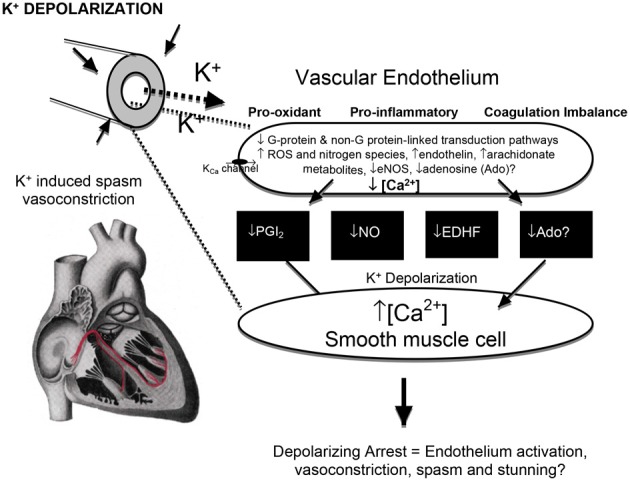Figure 6.

The effect of high potassium on the endothelium and smooth muscle interactions, vasoconstriction, and possible injury. Membrane K+ depolarization decreases the driving force for Ca2+ entry into endothelial cells through Ca2+-activated K+ channels (Coleman et al., 2004), increases voltage sensitive endothelial NADPH oxidases (and other oxidants) (Sellke et al., 1993; Li and Shah, 2004) which can lead to vascular smooth muscle contraction and vasoconstriction (van Breemen et al., 1997) from a reduced availability of endothelial-derived vasodilators [prostacyclin (PGI2), nitric oxide (NO), non-NO/PGI2 relaxation factors (EDHF's) and adenosine] (He, 2005; Wu et al., 2005; Yang and He, 2005). Hyperkalemia in cardioplegia has been linked to loss of ACh-dependent relaxation, which may be exacerbated by ischemia and hypothermia (Tyers, 1997; Parolari et al., 2002; Yang and He, 2005).
